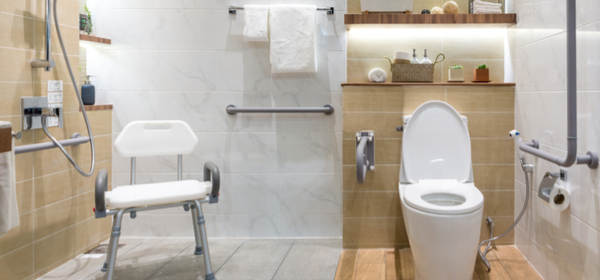You may not see signs of fingernail scratches on the door jambs yet, but it is a fact that most older Australians would have to be led kicking and screaming out of their homes and into aged care.
Property Council of Australia data says the average age people move out of their house and into a retirement village or nursing home is 75 years.
Yet, the vast majority of Australians aged in their 80s and 90s are staying put. The latest census reveals that 80 per cent of people between 85 and 89 years, and half of those aged 95 to 99 years, are still living in their own home.
And while we are living longer, sometimes the old bones haven’t quite kept up, making mobility around the home difficult.
Sources suggest that enquiries into retrofitting private homes to make them ‘age friendlier’ are soaring , as older people put off the inevitable need to be cared for in facilities other than their homes. Home Modifications Australia (MOD.A) Director Michael Bleasdale told YourLifeChoices that, all around the nation, there is a strong trend towards “ageing in place”.
However, he said there were two different types of clients retrofitting their homes: those who could afford to do it on their own terms and those who needed to rely on the National Disability Insurance Agency (NDIA).
MOD.A, which is the peak body for organisations involved in home modifications, has been lobbying for the NDIA to clear the backlog of applications from people needing their houses retrofitted.
Late last year, the body presented NDIA officials with data, case studies and member feedback about “the huge backlog of major home modification assessment reports held up” within the system.
It also brought to the agency’s attention “the widespread confusion about the process of … assessment, inconsistencies in the NDIA review of major home modification reports, and a range of the problems arising from lack of engagement” with the renovation sector.
“We were told that the agency hoped to gain more traction on assessments in February,” said Mr Bleasdale.
While vulnerable Australians are forced to wait for the wheels of government to grind on, many may feel tempted to take a stepping stone to aged care life via buying into or leasing from a retirement village group.
However, consumer group CHOICE cautions against moving into a village unless you are fully aware of the huge costs involved from day one through to when you leave the complex.
The group warns: “The upshot is that it’s very hard to know how bad the deal is until you decide to leave the village, whether because the operator exaggerated its charms or because you just need to move out.
“At that point you might find out the undisclosed and unexpected exit costs have made your village unit a very poor investment indeed. And to rub salt in the wound, the village operators often don’t have to pay you back what’s left of your loan until months after you’ve left, and sometimes even longer.”
Another important consideration is that, over time, the village apartment you buy may eventually need modifications. At that point, it is likely you will have to pay for them yourself.
Do you need to renovate your home to make it more “friendly”? Have you been affected by the NDIA taking its time with assessments? Would you prefer to pay for renovations you have control over? Is the thought of moving into a retirement village more appealing?
Related articles:
Budget 2017: missed opportunity
Infighting over NDIS funding
NDIS expansion moving too quickly

